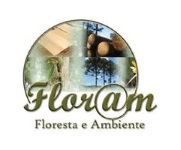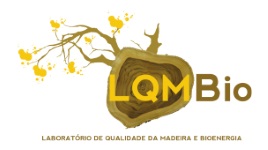USE OF THE INAJÁ STIPE (ATTALEA MARIPA (AUBL.) MART.) FOR THE GENERATION OF BIOENERGY
03 - Bioenergy: Economy, Market and Policy
 1 THAIS YURI RODRIGUES NAGAISHI, 1 SUEO NUMAZAWA , 2 MARCIO DA SILVA CRUZ FREITAS NAGAISHI, 3 CAMILA THIEMY DIAS NUMAZAWA, 1 PAULO RENATO SOUZA DE OLIVEIRA, 1 CAMILA CRISTINA SOARES LOBATO
1 THAIS YURI RODRIGUES NAGAISHI, 1 SUEO NUMAZAWA , 2 MARCIO DA SILVA CRUZ FREITAS NAGAISHI, 3 CAMILA THIEMY DIAS NUMAZAWA, 1 PAULO RENATO SOUZA DE OLIVEIRA, 1 CAMILA CRISTINA SOARES LOBATO
1 UFRA
2 EMATER
3 USP
The use of palm trees, if managed, can be a promising possibility to reconcile the sustainable use of forest resources and improve the quality of life of communities. There are researches that prove the economic viability of several palm trees, for example for energy use, due to their abundance and high reproductive power, thus emphasizing their role in the regeneration of degraded areas and forest succession. Rural communities use palm trees for food, home coverage, handicrafts, among others. However, in the Amazon region there is abundance of palm trees that have not yet been economically used or are being underutilized. Among them, Attalea maripa (Aubl.) Mart., known as inajá, that occurs all over the North region. In this context, the objective of this researche was to evaluate the bioenergetic aptitude of the inajá stipe. The samples were collected in five locals in the northeast of Pará: Cametá (CA), Abaetetuba (AB), São João de Pirabas (SJP), São Caetano de Odivelas (SCO) and Capitão Poço (CP). In each local, 25 matrices were identified and evaluated. The chest circumference (CAP) and the height of the stipe (AE) were collected for physical, chemical and energetic analysis, and a composite sample was collected from three random stipes from each local. The analyzes were in accordance with the recommended standards: ABNT 8112 (1986) for chemical analysis, ABNT 11940 (1983) for physics and ABNT 8633 (1983) for energetic. Regarding CAP, the mean was 132.43 cm (CV = 27.81%), and the AE had a mean of 314.89 cm (CV = 30.67%). The observed variations may be due to the bioclimatic characteristics of the region where the populations are located, as well as the different ages of each palm tree. The average values of the physical variables, moisture content and basic density were 50.09% and 0.34 g.cm-³, respectively. In this way, it is recommended to perform a drying process, and it may be outdoors for the equilibrium moisture content with the region. The chemical analysis indicated mean volatile materials of 82.46%, ash content of 0.83% and fixed carbon of 16.76%. As for the energy analysis, the higher calorific value was, on average, 4586.25 kcal.kg-1. The results indicates the inajá stipe with characteristics suitable for the energetic use, being able to be used as firewood for the familiar farmers of the Amazon region, or another form that requires energy for the generation of heat.
Keywords: biomass energy, palm tree
Acknowledgments: UFRA EMATER

























